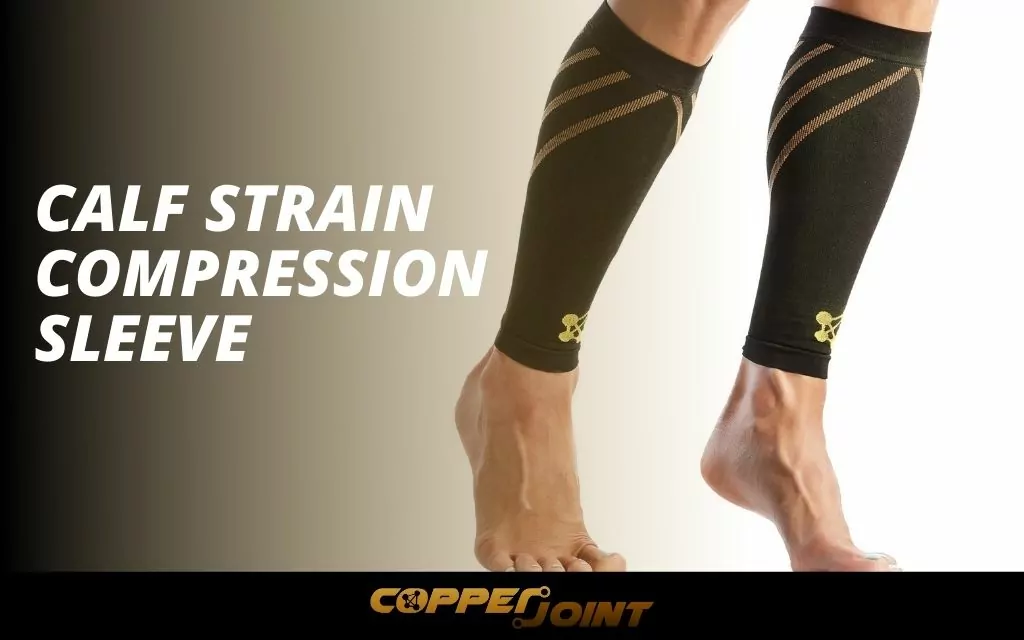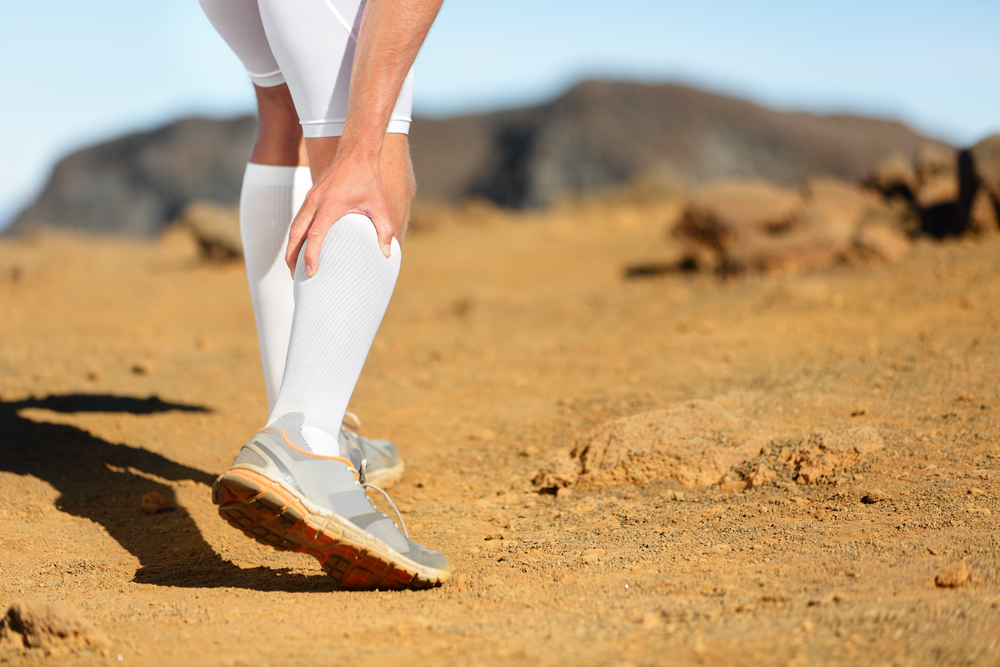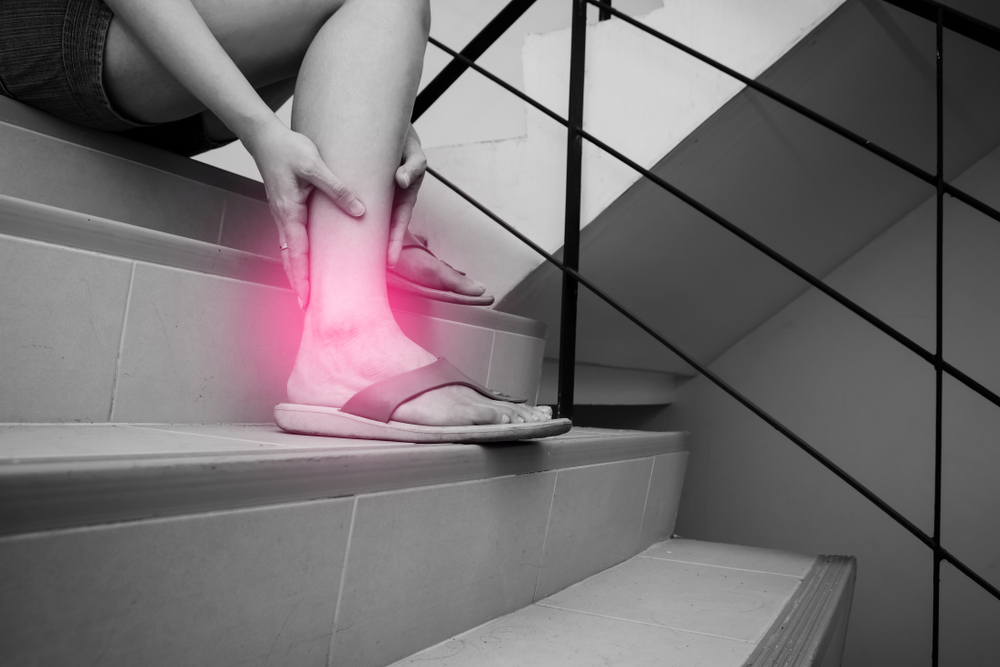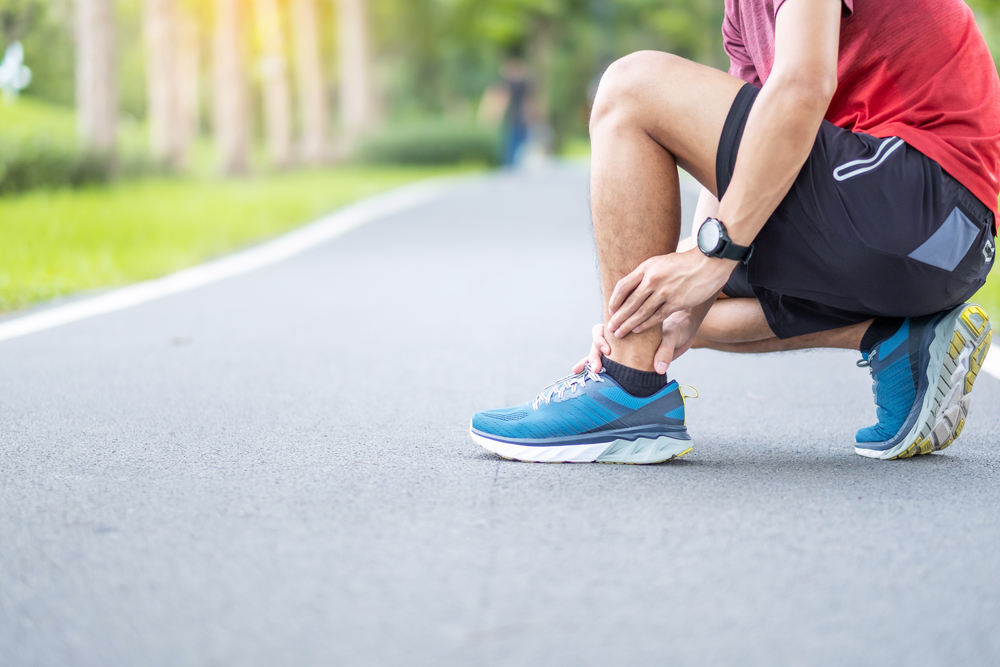
Have you heard about the calf strain compression sleeve? If you’re a fan of all things wellness and fitness, then you probably have. In that case, you may be wondering why they are getting so popular. After all, a large number of people are incorporating one into their lifestyle.
Well, compression sleeves like CopperJoint’s Calf Sleeve Pro have a long list of features that offer tremendous benefits. They are helpful in preventing or alleviating discomfort that arises from different calf-related conditions. If you want to learn more about why you need to use them, read on.

If you have invested in high quality and credible calf strain compression sleeve such as Calf Sleeve PRO, you can benefit from a range of features. Here are some of them.
The most common concern among calf compression sleeve users is that they sweat while wearing one. Therefore, CopperJoint uses copper-infused nylon to develop breathable calf sleeves. This way, the air can easily reach your skin, keeping it cool while you engage in physical activity.
Our copper infused sleeves can destroy fungi and bacteria that produce bad odor. They also feature anti-itch UPF 50+ materials that help compression sleeves to withstand harsh weather conditions.
The CopperJoint calf sleeve dries quickly if you wash it or mistakenly spill water on it. Simply air drying it can do the trick. Just keep it in an open space with plenty of ventilation for a few hours and wait for it to dry.
Its 3D ergonomic design makes it comfortable and pain-free to use. Also, the compression sleeve’s inclusive design means that a wide range of people can use them. Our products are extremely flexible, so you can wear them easily despite your calf weight. Thanks to its amazing design, it doesn’t bunch up or slips while exercising, walking, jogging, etc.
Our copper-infused calf sleeve pro is an extremely durable and high-quality product that allows long-term use without compromising on its benefits. If you choose the copper-infused nylon compression sleeve, you can use it on a regular basis for several physical activities.
CopperJoint’s compression sleeve allows you to build a certain amount of pressure on all sides of your calf. This feature is important to reduce pain and swelling in your calf. 4-way compression is also helpful to perform any physical task easily and comfortably.
Get your Copper Compression Calf Sleeve PRO
Our calf compression sleeve can increase pressure in the lymphatic veins. They encourage the lymphatic system to eliminate waste products your muscles release. As a result, the system will clear the area in your calf. As your calf begins to heal, you will notice a reduction in pain and swelling. Because a compression sleeve can greatly reduce your pain, it’s the best option for athletes and other people.
Our amazing calf strain compression sleeves help reduce inflammation and pain; they help in speedy recovery from injuries. They can also help you restore damaged muscles, build new ones, and reduce symptoms of injury.
If you are planning to engage in strenuous activities or you’re a competitive athlete, you can wear calf compression sleeves. These compression sleeves help prevent injuries. They support the weaker areas of your calf and ease pain during physical activities.
People who suffer from calf injuries, pain, or chronic leg conditions can wear compression sleeves. Besides helping you manage your problem, it can prevent further complications, giving you all the protection you need.
When you place your feet on the ground, you’ll feel a vibration up your leg. Although you might notice it in the beginning, some problems can develop over time. These sleeves can help stabilize your legs and lower the impact that results in calf pain.
Compression sleeves are best for blood circulation, especially for athletes. Note that blood circulation helps in faster recovery when you experience any injury. Also, good circulation in your calf benefits not only your legs but also your entire body.
Though compression sleeves are highly beneficial for you, you don’t have to wear them throughout the day. You can wear them while performing physical activities like exercise, walking, or stretching. You can wear them for as long as you are engaged in the activity. Generally, it’s safe to wear these sleeves for 12 hours if necessary.
But if you want to use them without engaging in strenuous activity, such as with a sedentary lifestyle, you should avoid using them for more than 2 hours. This is because it can cause swelling at the base of your ankles. Lastly, if you are suffering from any leg injury and pain, it is better to consult an expert before wearing them. They can guide you as to whether a compression sleeve can alleviate your problem.
Get your Copper Compression Calf Sleeve PRO
Dealing with a calf strain can be both frustrating and painful, especially for those who lead active lifestyles. Calf compression sleeves have become a popular aid not only in the recovery from such injuries but also as a protective measure during physical activities.
The concept is simple: these sleeves apply consistent pressure to the calf muscle, helping to manage pain and reduce swelling by improving blood flow and providing support to the afflicted area.
I’ve observed that, whether you’re an athlete or someone who enjoys a daily jog, the use of a calf compression sleeve can be beneficial. The most pronounced benefits are typically seen when the sleeve is worn correctly and consistently. Proper use of these sleeves can facilitate faster recovery by controlling inflammation and can help prevent further injury by supporting the muscle during movement.
It is essential to understand not just the potential benefits but also the correct usage and limitations of calf compression sleeves. By increasing circulation, they aid in the flushing out of waste metabolites from muscle tissue and can reduce soreness after exercise.
However, it’s important to note that while they are a helpful tool in rehabilitation and performance, they are not a cure-all and should be used as part of a broader injury recovery or exercise regimen.
Calf strains are common muscle injuries that can cause pain, soreness, and inflammation. Using compression sleeves can be a beneficial part of the management strategy for these injuries.
A calf strain, an injury to the muscles at the back of the lower leg, typically occurs when these muscles are overstretched or forcibly contracted. This type of injury manifests through symptoms such as sharp pain, possible swelling, and difficulty moving the affected leg. The gastrocnemius and soleus muscles are the two main muscles that can be strained in the calf, each with its own specific injury pattern.
Compression sleeves for calf strains provide several potential benefits. They apply steady pressure to the calf area, which can help reduce muscle oscillation during activities. This compression also promotes increased blood flow, which can aid in reducing inflammation and expedite the healing process. Moreover, they provide support that may prevent further injury, and by retaining heat, they can keep the muscles warm, further preventing muscle stiffness and soreness.
Get your Copper Compression Calf Sleeve PRO
In my quest for the optimal calf compression sleeve, I prioritize fit, material composition, and compression level. It’s crucial to match these elements to your specific needs for maximum benefit.
When selecting a calf compression sleeve, the fit is paramount. A proper fit ensures the sleeve provides the necessary support without restricting circulation or causing discomfort.
The material directly impacts comfort and functionality. Opt for a balance of elasticity, durability, and breathability when it comes to the fabric of a calf compression sleeve.
A thoughtfully chosen calf compression sleeve can be a beneficial addition to a recovery regimen or as part of an exercise routine. It’s not just the aesthetics; the right sleeve can mean the difference between adequate support and discomfort.
Get your Copper Compression Calf Sleeve PRO
Compression sleeves are integral for athletes looking to optimize performance and recovery. Their design targets key areas to enhance blood flow and support during physical activities.
When engaging in sports, especially running, the muscles are subjected to rigorous demand. I find that compression sleeves effectively stabilize these muscles, providing the needed support that may contribute to improved endurance. Runners, in particular, can benefit from the gentle pressure these sleeves apply, which is believed to enhance blood flow.
This increased circulation is crucial during a race or training, as it delivers more oxygen to the muscles, potentially boosting performance. Moreover, the snug fit of compression calf sleeves is crafted to work its magic by maintaining muscle alignment, which is vital for repetitive motions in activities such as sprinting or long-distance running.
Post-exercise recovery is as critical as the performance itself. The role of compression sleeves extends beyond the activities to the recovery phase. By wearing these sleeves after strenuous sports, they help reduce muscle fatigue and soreness, attributes which are essential for efficient recovery. This is due to the sleeves’ ability to facilitate the elimination of waste metabolites from muscle tissue.
As a result, the recovery process may be accelerated, allowing for quicker return to training or competition. Furthermore, the benefits of calf compression sleeves include reducing pain and inflammation, which can be quite desirable after an intense workout or sports event.
Incorporating compression sleeves into an athletic regimen offers a non-invasive way to support the muscles, promote blood flow, and aid in recovery, making them a valuable tool for any athlete dedicated to their sport.

Compression sleeves offer both health and medical benefits, particularly in enhancing circulation and preventing various leg-related conditions. When I guide patients or clients toward understanding compression wear, I emphasize two specific aspects: their role in preventing and managing medical conditions, and their utility for everyday use.
Deep Vein Thrombosis and Blood Clots: Wearing compression sleeves can lower the risk of developing Deep Vein Thrombosis (DVT), a condition where blood clots form in the deep veins of the legs. The graduated compression helps to maintain blood flow and minimizes the stagnation that can lead to clots.
Varicose Veins: For clients concerned with varicose veins, I advise that wearing compression sleeves can alleviate discomfort. They do this by applying pressure that supports the veins, which aids in the prevention of venous insufficiency.
For Nurses and Other Professionals: Nurses and other individuals who spend numerous hours on their feet may find that compression sleeves help in reducing leg fatigue and swelling. The graduated compression is conducive to sustained comfort and support during long shifts.
Travel Comfort: I commonly suggest compression sleeves for clients who travel frequently. Long periods of sitting during travel can impede circulation, but wearing compression sleeves can help in maintaining good blood flow, potentially reducing the risk of travel-related blood clots.
During Pregnancy: Pregnant women might find relief from swelling and varicose veins through the use of compression sleeves. The gentle pressure assists in managing the additional strain on the circulatory system due to pregnancy.
Get your Copper Compression Calf Sleeve PRO
When it comes to optimizing the performance and longevity of a calf compression sleeve, attention must be given to proper maintenance and careful observation to know when a replacement is due. I’ve learned that these aspects are pivotal for ensuring that users get the most benefit from their compression gear.
It’s essential to keep your calf compression sleeve in top condition by following a strict maintenance routine. I always check the care label first, but most sleeves require similar care:
For sleeves with cooling technology or those that are anti-odor, I take extra care not to use fabric softeners or iron them, as these can damage the material and reduce the effectiveness of these technologies.
Knowing when to replace ypur calf compression sleeve is key to maintaining the benefits it provides. Here are specific signs that indicate it’s time for a new sleeve:

In my experience with calf compression sleeves, they are not just a fitness accessory but also a therapeutic aid for various conditions. Below, I address some of the common queries people have regarding these sleeves.
Wearing a calf compression sleeve applies consistent pressure to the lower leg, which can improve blood flow and reduce the distention of veins characteristic of varicose veins.
Runners often use calf sleeves during workouts because they can promote increased blood flow, reduce muscle oscillation, and help clear waste metabolites, potentially reducing soreness and improving recovery times.
Yes, calf compression sleeves may offer relief from shin splints by providing additional leg support and increasing blood circulation, which can reduce pain and swelling associated with this condition.
Leg compression sleeves enhance circulation by applying graduated pressure to the lower legs, which assists in moving blood back to the heart and can prevent blood from pooling in the veins.
It is generally safe to wear a calf compression sleeve for extended periods during the day, even up to 12 hours after exercise, depending on personal comfort and the intensity of your activity.
A calf compression sleeve should fit snugly, without being too tight to create discomfort or too loose to lose the benefits of compression. A proper fit ensures effective compression and support.
High-quality calf strain compression sleeves like CopperJoint’s Calf Sleeve PRO are ideal for addressing several calf problems. These sleeves can boost your performance and offer the required calf strain support to enhance your daily exercise regime. You can also use them in certain sports to eliminate the risk of injuries while playing. Of course, eating healthy, maintaining proper posture in sports, staying hydrated, and other factors are as important as wearing compression sleeves. By keeping other aspects in check, you can boost your physical health and enjoy faster recovery for your muscles.
Try our Copper Compression Calf Sleeve PRO